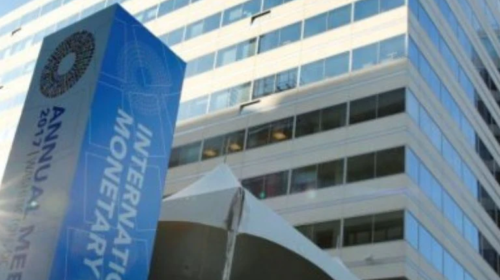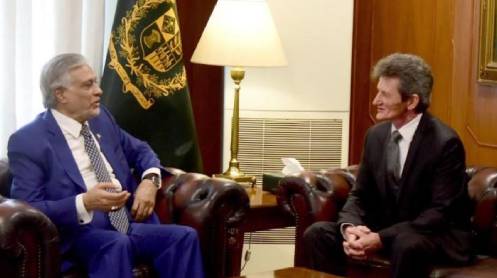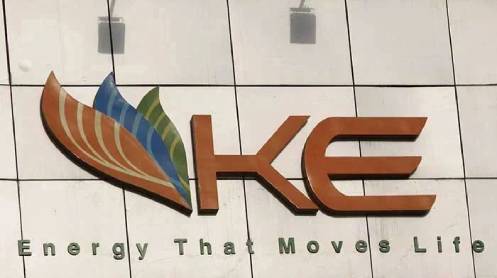Ministry of Finance has sought an update from the Ministry of Energy (Power Division and Petroleum Division) on commitments/ actions made with the International Monetary Fund (IMF) including power tariff adjustments and increasing PDL to Rs 50/ litre.
The seventh and eighth combined reviews of IMF’s EFF Programme have been completed. The Memorandum of Economic end Financial Policies (MEFP) agreed with the IMF provides a structural benchmark, indicative targets, and other actions relevant to the Ministry of Energy.
According to Finance Ministry, there are two structural benchmarks:(i) finalization of the combined Annual Rebasing (AR) for FY22 and FY23 by the end of September to take effect on October l, 2022; and (i) submission to NEPRA of petitions for the (a) FY23-July FPA by end-August; and (b) FY23-Ql QTA by end October which will ensure full recovery of the revenue requirement (including lost revenue from the delayed first-stage annual rebasing FYs 22-23 in July 2022) within FY23 Q2.
FY 2022-23 Indicative targets ceiling on power sector payment arrears to reduce the cumulative flow of circular debt by Rs 208 billion by the end of September, and Rs 157 billion by the end of December 2022, and Rs 30 billion increase in March 2024.
Domestic consumers: Power tariff adjustments will continue, IMF assured
According to Finance Ministry in other items, Pakistani authorities have assured IMF that (i) they remain committed to the timely implementation of regular tariff adjustments in line with established formulas as this will help achieve cost recovery and increase the progressivity of the new tariff structure for residential consumers;(ii) plan to initiate a consultative process to devise a comprehensive subsidy rationalization program for agriculture tube-wells with the objective of submitting a concrete reform proposal to the Cabinet by November 2022;(iii) in FY23, the government will continue to renegotiate. PPA terms in return for clearing un-guaranteed CPPA-G arrears. The authorities will settle up to Rs 180 billion earmarked for IPPs and GPPs with revised PPA terms, using the established contract structure;(iii) the government will convert expensive government-guaranteed PHPL debt into cheaper public debt. The government has only created fiscal space to settle Rs 35 billion of the Rs 165 billion falling due from the budget and roll over the public guarantee for the remaining Rs 130 billion using the established contract structure;(iv) pursue other reforms, most importantly: (a) increasing private participation in DISCOs to improve their governance and efficiency; (a) seeking NEPRA’s approval of a Transmission System Expansion Plan (TSEP) that meets the requirements for an increased share of variable and cheaper renewable energy in the generation mix; and (c) seeking NEPRA’s approval of the updated Grid Code and Commercial Code to set the objectives, principles, rules, procedures, rights, and obligations that govern the trading in the new wholesale market and thus lo improve the efficiency in distribution;(iv) as a matter of principle, the authorities assured that they will strive to reduce capacity payments, as they pay arrears, either by renegotiating the PPAs or by lengthening the duration of bank loans, depending on adequate budget space and implementation progress of the CDMP. The same principle applies to the assumption of PHPL amortization by the federal budget. The authorities will also continue to refrain from netting out cross-arrears (unless they are independently audited); using “non-cash” settlements (such as payables against the reimbursement of on-lent loans to DISCOs); and issuing government guarantees (such as for PHPL-issued Sukuks to transfer CPPA-G payables to PHPL) ;(v) the authorities also gave a commitment that they will continue to fully pass-through international oil price movements to consumers to contain fiscal spending and risks. To this end, the government will follow a two-step approach. First, it will increase the PDL in line with our commitments to take it to a target level of Rs 50/ litre by January for petrol, and April for diesel. Once the fully unsubsidized prices are reached, including with the restoration of the full taxation levels, they will establish an automatic pricing mechanism in consultation with Fund Staff; and (vi) power subsidies (either directly to CPPA-G and producers or indirectly to consumers, including through targeted transfers by BISP) shall be limited. As a matter of principle, energy subsidies will only be given by the federal government and will ensure equity across the provinces. They will be contained to Rs 570 billion, of which Rs 225 billion will be for the Tariff Differential Subsidy (TDS) arising from the power tariff adjustment path.
Finance Ministry has urged on Ministry of Energy that the commitments/ actions agreed with the Fund be completed well within the stipulated timeline under intimation to Finance Division. Furthermore, fortnightly meetings to review the implementation status of the actions/ commitments will be held at the level of Joint Secretary with the focal person of Ministry of Energy.





